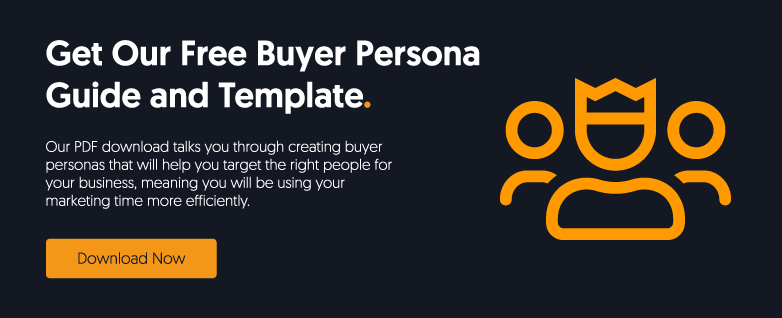Women's economic power as earners, consumers, purchasers, and influencers has been flourishing progressively for decades. The changing female demographic demonstrates that women are increasingly becoming creators of wealth, with projections that they are on course to control 75% of all household spending by 2028.
Due to the influence of women on the consumer economy growing so significantly, it is critical that marketing effectively and respectfully to women takes this into account.
The modern female audience demands authentic, intelligent and entertaining content, investing more visibly in woke, culturally informed brands. In truth, the most successful way to market products or services to women is to forget that you are targeting a female demographic and aim simply to produce compelling and progressive content which is sensitively designed. If this can be effortlessly achieved it's a win-win for both brand and audience.
Communicate with your audience as individuals, not as a demographic
Before you even begin strategising your online content, consider who you are targeting, taking into account the context as well as the message you want to convey. Trying to generalise content to appeal to a broad spectrum of potential consumers rather than targeting a segmented audience may result in a rapidly loss of interest from readers potentially turning them off your brand and damaging your reputation. No-one wants to feel like a victim of clickbait. Invest authentically in your reader's interests and pain points. This strategy does resonate the most strongly when appealing to a female audience specifically. As a child-bearer, a woman's life is impacted far more by nurturing a young family than her male counterparts is. If your product or service aims to reach mothers, your sales pitch's tone and content must speak entirely differently than to a feature which talks to a retired older woman. This does not mean differentiating between women as simply 'mothers' or 'not mothers', but treating the two as very different female audience groups.
Another example of audience segmentation could be contrasting city living entrepreneurs with rurally located crafty types; In each case, location, occupation, and interests of each group are defining characteristics to gauge your tone and content. Women's communication styles are very different from men's, with their altogether more subtle nuance and dialect. Women tend to be more open in their communication and demand to be heard and understood. Women are generally more emotional by nature. Men are typically more analytical and pragmatic; Create content to understand your reader's pain points and thereby discuss, empathise and offer a solution.
Do not patronise
The pink ribbon in breast cancer represents so much for campaigners rallying to raise charitable contributions to help improve diagnosis and pursue cancer research. However, many women feel negatively towards this theme of 'pinkwashing.' Surviving breast cancer can be brutal, ravaging people's lives. The idea of feminizing this struggle symbolising it with a cute and tidy pink bow can be seen as condescending. This is a good example of a patronising marketing strategy.
Existing as a woman means more than being simply delicate, sweet and pink. Today women purchase over 50% of what has traditionally been considered male orientated products including technology and cars. Todays women do not seek out exclusively pink coloured items. In truth, their choices are driven by so much more than what appears to be feminine. So stop the pinkwashing if you want to attract a diverse and intelligent crowd of women. There will be a demographic who want the pink product, so, sure include that in your range but do not major on it. Genderisation is as insulting as ageism and classism. Think laterally and respectfully. Your female audience is driven by performance and useability, not just hues of pink.
Context and compassion.
Women reinvest up to 90% of their income in their families and communities. In comparison, men only reinvest between 30-40%. Understanding the values that drive investment and sales demands clear comprehension of pain points. Pinkwashing genderises by failing to recognise a woman's drivers', and as a result content can quickly lose traction with your consumers. Gen Z and millennial female audiences prioritise investing in brands that are ethically and environmentally friendly. Partnering with a charity or supporting a trending cause is a kind way to do business and a progressive avenue to explore retaining your customers.
Just as was discussed earlier, connecting emotionally with your female audience is a must. Supporting a cause, charity, or burgeoning independent business demonstrates compassion and empathy. Take the time to genuinely reflect on what matters and makes sense to the brand and marry that up with it. Discuss your reasons for donating or uplifting online. Business isn't just about making money and self-promoting, its also about give and take. Any brand which neglects to foster these connections will appear one dimensional. Stop, look around you and think about who and what matters to you and your audience outside of profit and sales.
Create content that matters
Women's attention span is typically shorter than men's. The window to make an impression and then entice a reader to engage with content for the duration of a video or an article is tight. Women are more likely to seek out progressive content which entertains, amuses and informs. Women want a richer experience. Being more avid users of social media, women tend to share more content daily. Therefore the reach you aim to achieve is far more extended than that of the male audience. So be sure to use language which entices and engages from the get-go. Consider your tagline for sharing carefully. If she finds your content inspiring, a woman will encourage all of her followers to engage with your brand also.
Seek out the right influencer and let them do the talking
Eighty-four per cent of influencers, creating sponsored posts on Instagram are female. By helping brands reach out and speak personably to users, female influencers help brands achieve a higher reach due to the huge number of followers they are able to attract. Discerning readers seek out informed sources of authority to help them develop accurate opinions of products and services. Influencers online facilitate exposure to help brands maximise their reach. However, not every influencer has the capacity to add value to your brand. Be judicious when selecting the right influencer to collaborate with; Their relevance is fundamental. There should be commonality in the followers you attract. The amount of liking leverage of each post they share should be substantial. But beware that the most likes does not always translate into the most traction when marrying your brand with an influencer. Micro bloggers can also be useful. Consider the most engaging influencers who respond to comments and post regularly. Ensure your language and theirs flows are consistent with one another and that they offer a fluid form of endorsement that does not feel too forced or commercialised.
Harness the Mum Power
From young mums to mature mums, stay at home mums to working mums, single mums, and foster mums, together mothers represent a $2.4 trillion market share. 18.3 million Internet users who are mothers read blogs at least once a month and mention brands an average of 73 times per week compared with just 57 times per week of their male counterparts. Ninety per cent of mums are online vs just 76% of their male counterparts. This statistic itself speaks convincingly in favour of the importance of appreciating the buying power associated with mothers. Although you could not and should not group this demographic into a single mum-focussed bracket, there are some generalisations you can assume. Mums are brilliant, busy, dynamic, honest and productive people who need to comprehend and digest information quickly and efficiently. So arrange the content concisely and make it as easy to share as possible. Mums form a community in which information is distributed vigorously. Get mum on your side, and your influential reach should flourish considerably.




